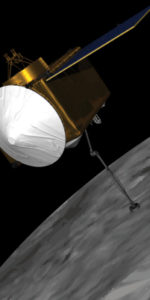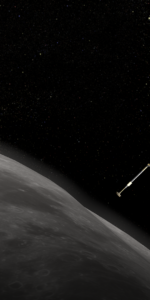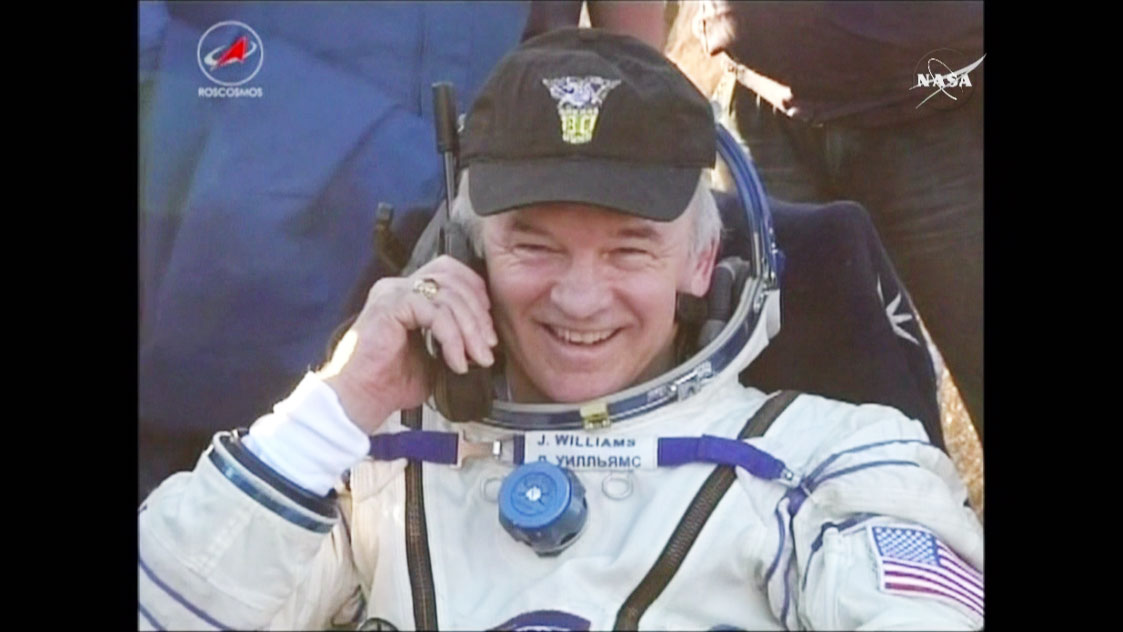
After more than 172 days in space, U.S. national-record-breaking astronaut Jeff Williams and his Russian crewmates Alexei Ovchinin and Oleg Skripochka have landed safely in south-central Kazakhstan, aboard their Soyuz TMA-20M spacecraft. The trio undocked from the space-facing (or “zenith”) Poisk module on the International Space Station (ISS) at 5:51 p.m. EDT on Tuesday, 6 September. Following a smooth de-orbit burn, they achieved a textbook landing at 9:13:53 p.m. EDT (7:13:53 a.m. local time on Wednesday, 7 September). In completing the fourth mission of his astronaut career, Williams has accrued more than 534 days away from the Home Planet, making him by far the most experienced U.S. spacefarer of all time.
Formally announced as a crew by NASA and its International Partners (IPs) in February 2014, Williams, Ovchinin and Skripochka pulled somewhat unusual backup crew duties for several different missions. Under normal circumstances, a backup crew for a given Soyuz flight to the space station skips one mission, before rotating into the prime crew slot for the third. For example, the backup crew for Soyuz MS-01—launched last 6/7 July—will rotate into the prime crew spot for Soyuz MS-03, which will fly in mid-November. However, the fortunes of Williams, Ovchinin and Skripochka were tightly entwined with their respective roles during the recent year-long mission of Scott Kelly and Mikhail Kornienko.
This introduced a measure of complexity into the crew makeup, for whilst Kelly and Kornienko remained aboard the ISS for almost a full year, their Soyuz TMA-16M crewmate Gennadi Padalka joined them for only the first six months. In response, Williams and veteran cosmonaut Sergei Volkov served as backups for Kelly and Kornienko, with Ovchinin assuming the backup role for Padalka. In the meantime, Skripochka served on the backup crew for the Soyuz TMA-18M short-duration visiting mission in September 2015, before all three men rejoined to begin formal training for their Expedition 47/48 increment. Volkov, for his part, launched aboard Soyuz TMA-18M and accompanied Kelly and Kornienko for the second half of their long voyage.
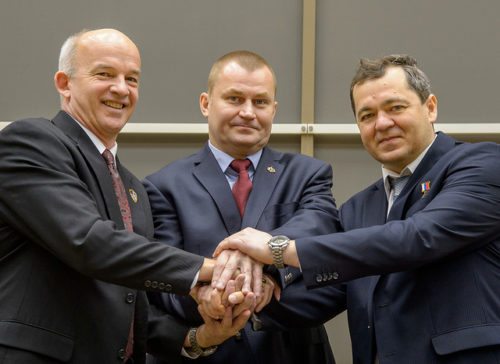
Finally, at 3:26 a.m. local time on 19 March 2016 (5:26 p.m. EDT on the 18th), Williams, Ovchinin and Skripocha launched into the night from Site 1/5—“Gagarin’s Start”—at the Baikonur Cosmodrome in Kazakhstan. Within minutes, their Soyuz TMA-20M spacecraft reached orbit and following a now-standard four-orbit “fast rendezvous” they docked at the station’s space-facing (or “zenith”) Poisk module, about six hours later. The new arrivals were welcomed by Expedition 47 Commander Tim Kopra and his crewmates Yuri Malenchenko of Russia and Britain’s Tim Peake, who had been in residence aboard the ISS since mid-December 2015.
At the start of his mission, Williams already stood as the United States’ sixth most experienced spacefarer, with over 361 days accrued from a Space Shuttle flight and two previous long-duration ISS expeditions. With this mission, Williams became the first American to embark on as many as three long-duration flights, an accolade due to be matched by fellow astronaut—and fellow “Sardine”—Peggy Whitson in November 2016. As each day passed, however, Williams steadily crept up the U.S. experience table. By the end of March, he passed Don Pettit to enter fifth place and, by mid-April, he had also eclipsed Mike Foale, Whitson and Mike Fincke to position himself as the second most experienced U.S. astronaut in history, sitting behind Scott Kelly.
When he finally exceeded Kelly’s cumulative total of 520 days on 24 August, Williams received an unexpected message of congratulations from his fellow Sardine. “I have a question for you,” said the now-retired Kelly, flanked by a jocular Pettit in the Capcom’s seat in Mission Control. “Have you got another 190 days in you?” Having trained as Kelly’s backup to spend a full year in space, the allusion was obvious to Williams, who replied diplomatically: “That question’s not for me; that’s for my wife!”
Within the first month of his stay aboard the ISS, Williams welcomed both an Orbital ATK Cygnus cargo ship and a SpaceX Dragon to his new home. The OA-6 Cygnus, lofted atop a United Launch Alliance (ULA) Atlas V 401 booster from Cape Canaveral on 23 March, arrived safely three days later and was robotically berthed at the Earth-facing (or “nadir”) port of the station’s Unity node. Poignantly, OA-6 was named in honor of STS-107 Commander Rick Husband, who died aboard shuttle Columbia in February 2003. Just two weeks after the arrival of OA-6, SpaceX’s eighth dedicated Commercial Resupply Services Dragon (CRS-8) rose from the Cape, atop an Upgraded Falcon 9 booster, on 8 April. Packed inside Dragon’s unpressurized “trunk” was the Bigelow Expandable Activity Module (BEAM), which was robotically installed onto the aft port of the station’s Tranquility node a week later. Following several weeks of checks—and one partially successful attempt—BEAM was expanded to its full volume under Williams’ oversight in late May, marking the first pressurized habitable spacecraft ever attached to a piloted orbital vehicle.
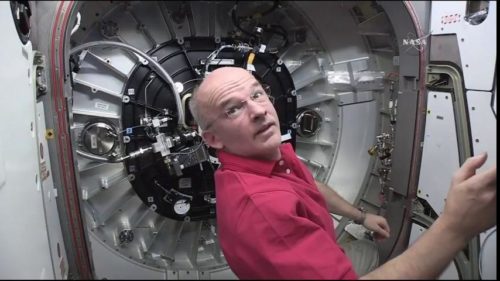
By this stage, Expedition 47 was heading into its homestretch. A decision had been made in late April to extend Kopra, Malenchenko and Peake’s stay by two weeks, in order to accommodate an intensive phase of on-board scientific research, and the trio finally boarded their Soyuz TMA-19 spacecraft and returned safely to Earth on 18 June. Shortly before their departure, Kopra relinquished command of the space station to Williams, who would lead Expedition 48 through early September. Three weeks later, on 6/7 July, Soyuz MS-01 rocketed into orbit from Baikonur, carrying the second half of his crew: Russian cosmonaut Anatoli Ivanishin, NASA’s Kate Rubins and Takuya Onishi of the Japan Aerospace Exploration Agency (JAXA).
Newly expanded back up to six members, the station headed through July with the successful launch of SpaceX’s CRS-9 Dragon, which arrived on the 20th, bearing a large payload of scientific supplies and the first International Docking Adapter (IDA-2). Pressed into service as the “first” such adapter, following last year’s loss of IDA-1 in the CRS-7 accident, IDA-2 was installed onto Pressurized Mating Adapter (PMA)-2 at the forward “end” of the Harmony node during U.S. EVA-36 on 19 August. In completing this EVA, Williams became the oldest American ever to participate in a spacewalk, aged 58 years and 214 days. Already, when he launched in March, he had become the oldest U.S. citizen to fly a long-duration space station increment.
More recently, on 1 September, Williams and Rubins undertook a second EVA to retract the Trailing Thermal Control Radiator (TTCR) on the station’s P-6 truss and tend to a number of other activities, including the replacement of an external camera light, the installation of high-definition cameras and an inspection of the port-side Solar Alpha Rotary Joint (SARJ) on the Integrated Truss Structure (ITS).
Only days after the second EVA, preparations began for the return of Williams, Ovchinin and Skripochka back to Earth. On Monday, 5 September, Williams ceremonially handed over command of the ISS to Russia’s Anatoli Ivanishin, who will lead Expedition 49 through late October. In doing so, Russia is level with the United States on the total number of ISS commands, with each nation having led 23 expeditions since November 2000. The other three long-duration increments have been led, in turn, by the European Space Agency (ESA) on Expedition 21, the Canadian Space Agency (CSA) on Expedition 35 and the Japan Aerospace Exploration Agency (JAXA) on Expedition 39.
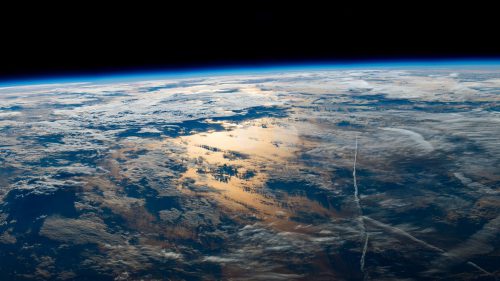
“I will certainly miss this view,” Williams tweeted to his almost-million-strong Twitter following early on Tuesday, 6 September, sharing a glorious view of the Home Planet. “Vast gratitude toward my crewmates, ground teams, supporting friends and family.” Farewells between the outgoing crew members were wrapped up early Tuesday afternoon, with hatch closure between Soyuz TMA-20M and the station’s Poisk module confirmed at 2:42 p.m. EDT. Ovchinin assumed the center commander’s seat aboard the spacecraft, flanked by Skripochka in the left-hand “Flight Engineer-1” couch and Williams in the right-hand “Flight Engineer-2” couch. The three men spent the next several hours donning and leak-checking their Sokol (“Falcon”) launch and entry suits and readying their spacecraft for undocking.
With near-perfect conditions at the landing site in Kazakhstan—characterized by a few clouds at 9,000 feet (2,740 meters), scattered clouds at 25,000 feet (7,620 meters), very light winds from the east and temperatures around 19 degrees Celsius (66 degrees Fahrenheit)—the undocking progressed like clockwork. At precisely 5:50 p.m. EDT, Ovchinin opened the hooks between Poisk and Soyuz TMA-20M, allowing springs to push them apart. Physical separation of the spacecraft occurred at 5:51:30 p.m. EDT, at which moment Expedition 48 officially ended and Expedition 49 began. At the point of separation, the Soyuz and the ISS were flying about 258 statute miles (415 km) above eastern Mongolia.
A few minutes after undocking, a smooth eight-second “burn” of the Soyuz thrusters was executed by Ovchinin, followed shortly thereafter by an equally smooth 30-second burn, to increase the relative separation distance between the two vehicles to around 25 miles (40 km). Around an hour before the scheduled landing, Russian MI-8 recovery and rescue helicopters were reportedly airborne from the remote town of Dzhezkazgan, 89 miles (143 km) north-west of the targeted landing site. By this stage, more than 2.5 hours had passed since Ovchinin, Skripochka and Williams departed the space station. At 8:21:25 p.m. EDT, Ovchinin executed the approximately four-minute “de-orbit burn”, committing Soyuz TMA-20M to a fiery descent back through Earth’s atmosphere.
“Just as soft as a cream-puff” was the summary offered by NASA’s Rob Navias in the moments after the completion of the burn, which was right on the money and slowed the three returning spacefarers by about 420 feet (128 meters) per second. At 8:30 p.m. EDT, the crew were instructed to close their space suit visors, ahead of the jettison of Soyuz TMA-20M’s spherical orbital module and cylindrical instrument module at 8:49 p.m. EDT. On the desolate steppe of south-central Kazakhstan, it was 6:49 a.m. on Wednesday, 7 September, and the MI-8 helicopters arrived at the landing zone and flew an oval-shaped “racetrack” pattern as they awaited Soyuz TMA-20M’s arrival.
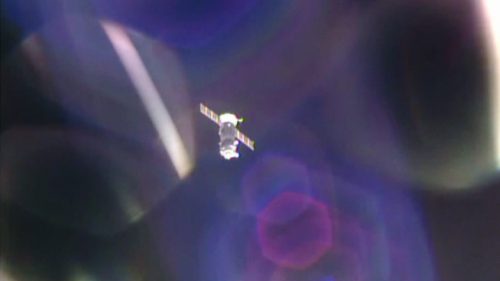
Encapsulated within the confines of the beehive-shaped descent module, Ovchinin, Skripochka and Williams achieved “Entry Interface” at about 8:51 p.m. EDT, at an altitude of some 328,412 feet or 62.2 miles (100.1 km). After passing through the worst of re-entry heating at about 8:57 p.m., Soyuz TMA-20M’s twin pilot parachutes were deployed at 6.6 miles (10.7 km), followed by the 258-square-foot (24-square-meter) drogue and, finally, the 10,764-square-foot (1,000-square-meter) main canopy. Recovery forces confirmed the successful deployment of the parachutes and established voice communications with the crew, as Soyuz TMA-20M headed towards the Central Asian steppe.
Although the parachutes significantly slowed the spacecraft, it was the action of six solid-fueled rockets in the descent module’s base which provided for a soft landing at 9:13:53 p.m. EDT Tuesday (7:13:53 a.m. local time Wednesday), just 23 minutes after local sunrise. Descending into haze, the blackened and scorched Soyuz TMA-20M momentarily disappeared from view, before landing safely on its side. As the helicopters touched down nearby, ground recovery vehicles quickly converged on the landing site.
From the instant of its Baikonur launch on 18/19 March to its haze-enshrouded touchdown on the south-central Kazakh steppe on 6/7 September, Soyuz TMA-20M and its three crew members had flown for 172 days, 3 hours and 48 minutes, completing the 48th expedition to the ISS. Having broken Scott Kelly’s record for the longest cumulative period of time spent in space by a U.S. citizen on 24 August, Williams has now accrued 534 days, 2 hours and 50 minutes over his four missions. This also establishes him as the world’s 14th most experienced space traveler; a position this high on the world experience table has not been held by a U.S. astronaut in over three decades.
For Ovchinin, who was first to depart the Soyuz, tonight’s landing wrapped up his first space mission. Smiling and waving, he clutched a soft toy, courtesy of his daughter, and spoke to family and friends via satellite phone. Next out was Williams, who received warm greeting from his flight surgeon and from veteran shuttle flier Pat Forrester, currently the deputy chief of the Astronaut Office. Bringing up the rear was Skripochka, who has now amassed 331 days, 12 hours and 31 minutes as he concludes his second long-duration ISS expedition. He now stands as the world’s 44th most experienced spacefarer, out of 216 individuals who have journeyed beyond Earth’s sensible atmosphere in over five decades of human space exploration.
Interestingly, the 58-year-old Williams has seen all aspects of the construction of the ISS. His first mission, aboard shuttle Atlantis in May 2000, saw him perform an EVA when the infant space station comprised just two pressurized modules. Six years later, in 2006, he flew for six months on Expedition 13, as the program recovered from the Columbia disaster and construction resumed with a new set of power-producing solar arrays. Then, in the fall of 2009, he launched a third time, arriving aboard a station whose long-duration crew had doubled from three to six members. And in more recent years, as the ISS settled into the operational, “utilization” phase of its life, he secured the record for the most seasoned U.S. astronaut of all time.
Want to keep up-to-date with all things space? Be sure to “Like” AmericaSpace on Facebook and follow us on Twitter: @AmericaSpace




